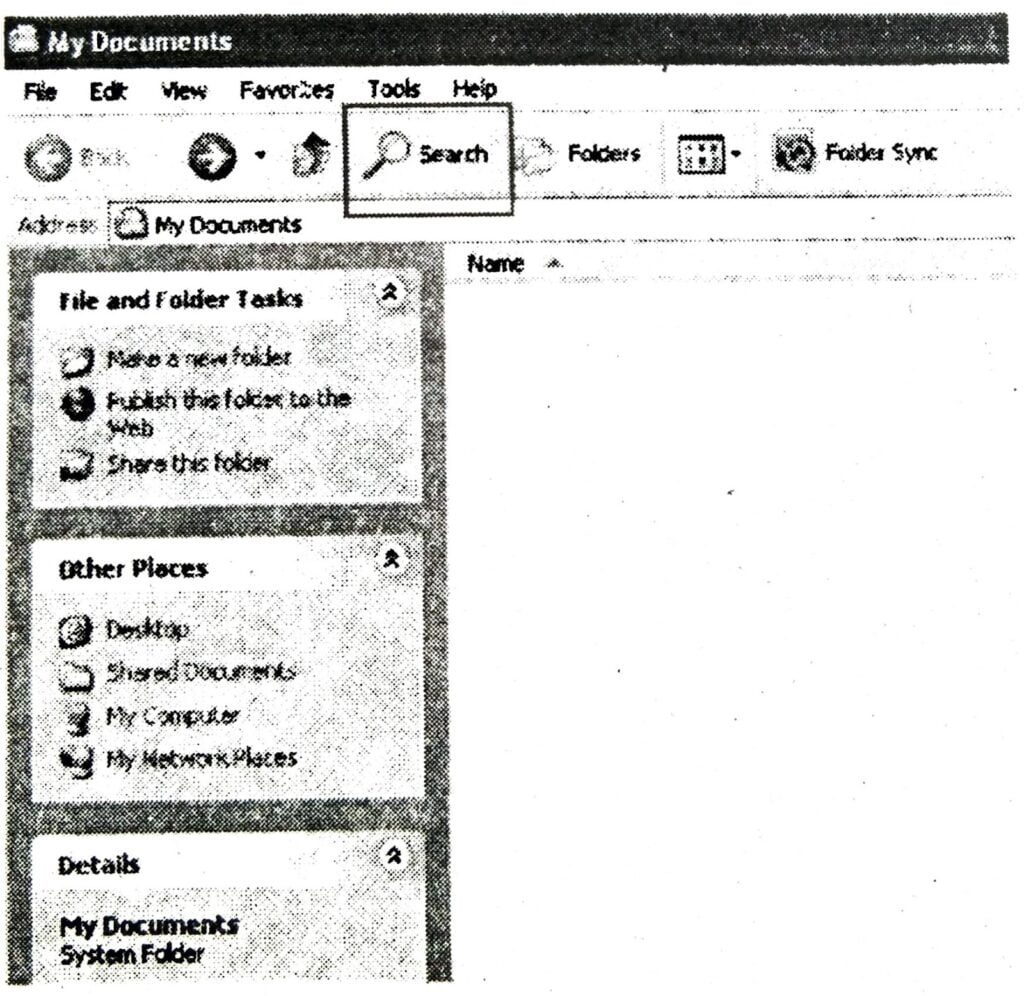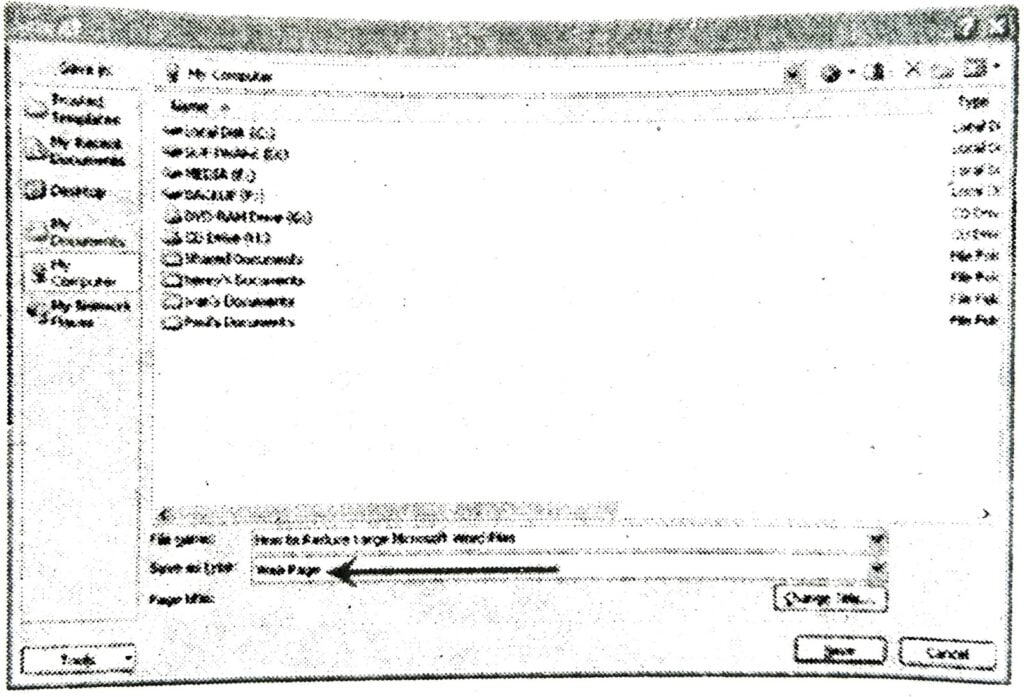NIOS Class 12 Data Entry Operations Chapter 2 Operating System Solutions to each chapter is provided in the list so that you can easily browse throughout different chapters NIOS Class 12 Data Entry Operations Chapter 2 Operating System and select need one. NIOS Class 12 Data Entry Operations Chapter 2 Operating System Question Answers Download PDF. NIOS Study Material of Class 12 Data Entry Operations Notes Paper 336.
NIOS Class 12 Data Entry Operations Chapter 2 Operating System
Also, you can read the NIOS book online in these sections Solutions by Expert Teachers as per National Institute of Open Schooling (NIOS) Book guidelines. These solutions are part of NIOS All Subject Solutions. Here we have given NIOS Class 12 Data Entry Operations Chapter 2 Operating System, NIOS Senior Secondary Course Data Entry Operations Solutions for All Chapter, You can practice these here.
Operating System
Chapter: 2
DATA ENTRY OPERATIONS
INTEXT QUESTIONS
1. Write True or False for the following:
(a) Deleted Files or folders are stored in the recycle bin.
Ans. True.
(b) Under Edit menu you can rename the file.
Ans. False.
(c) Windows provides a quick and easy way to install new software.
Ans. True.
2. Fill in the blanks:
(a) Under file, click …………………… and select folder.
Ans. Right mouse button.
(b) If you drag an item while pressing the ………………… you can create a shortcut to the file.
Ans. Right.
(c) When you start the computer system, the task bar appears ………………… on the screen.
Ans. Bottom.
(d) When files or folders are deleted from ……………….. windows places them in the recycle bin.
Ans. Hard disk.
(e) To select non-consecutive file or folder press and hold down …………………… key.
Ans. CTRL Key.
TERMINAL QUESTIONS
1. List out various steps to search for a file or folder.
Ans. To search for a file or folder:
(i) Click Start and click on Search.
(ii) Select All files and folders from the left hand side of the windows.
(iii) Type the name of the file or folder in part or full, or type a word or phrase that exists in the file to be searched.
(iv) If you do not know either piece of information select on or more of the remaining options:
(a) In Look in, click the drive, folder, or network you want to search.
(b) Click on When was it modified? to look for files that were created or modified on or between specific dates.
(c) To look for files of a specific size, click on what size is it? Select a size.
(d) Click on More advanced options to specify additional search criteria.
(v) Once you finish specifying the search criteria, click on Search to locate the file.
Similarly you can search for specific information on internet, or people in your address book, search for a printer or a computer on your network.

2. Describe the following:
(a) Recycle bin.
Ans. Recycle Bin: When files or folders are deleted from hard disk, Windows places them in the Recycle Bin, where they can be retrieved, until the Recycle Bin is made empty. Files or folders deleted from a removable storage media such as network drive are permanently deleted and are not sent tot he Recycle Bin.
(b) Task bar.
Ans. Task bar: When you start the computer system, then start and task bar appears on the bottom of the screen and by default remains visible when Windows is running.
Whenever a program is run or a window is opened, an icon representing the program appears on the taskbar. To switch between windows or program, click on the icon representing the window on the task bar. When the program or window is closed, the icon disappears from the task bar.
(c) Quitting a program.
Ans. Quitting a program: To quit a program, select the close button (x) in the upper-right corner of the window
Or
Click on File menu and select Close option.
(d) File Management in Windows.
Ans. File Management in Windows: File management in windows can be done through windows explorer or My Computer. Windows Explorer displays the hierarchical list of files, folders, and storage drives (both fixed and removable) on your computer. Windows Explorer can be used to copy, move, rename and search for files and folders.
3. Write down the steps to delete a file of folder from the computer.
Ans. Delete a file or folder from the computer:
(i) Click on Start and then click on My Documents.
(ii) Click on the file or folder you want to delete.
(iii) Under File, click Delete.
(iv) Files or folders can also be deleted by right-clicking the file or folder and then clicking Delete.
(v) Deleted files or folders are stored in the Recycle Bin, till they are permanently removed from the Recycle Bin.
(vi) To retrieve a deleted file, double-click the Recycle Bin icon on the desktop. Right-click on the file to retrieved and then click Restore.
(vii) To permanently delete a file, press and hold down SHIFT and drag it to the Recycle Bin.

4. What are the steps to install software int he computer.
Ans. Install Software in the computer:
(i) Click Start, click control Panel.
(ii) Double-click Add or Remove Programs.
(iii) Click on Add New Programs, and then select the source where the software to be installed is located such as CD or Floppy Drive.
(iv) Follow the instructions on your screen to install the software.
5. Write down various steps to rename a file or folder.
Ans. Rename a file or folder:
(i) Click on Start and the click on My Documents.
(ii) Click on the file or folder you want to rename.
(iii) Under File, click Rename.
(iv) Type the new name, and then press ENTER key.
File or folder can also be renamed by right-clicking it and then clicking Rename.
OTHER IMPORTANT QUESTIONS AND ANSWERS
Q. 1. Write short notes on the Recycle Bin.
Ans. Recycle Bin: Deleted files or folders are stored in the Recycle Bin, till they are permanently removed from the Recycle Bin.
Q. 2. Define the terms Operating system.
Ans. Operating System: An operating system is a system software that provides an interface for a user to communicate with the computer, manages hardware devices (disk drives, keyboard, monitor, etc), manages and maintains disk file systems and supports application programs. Some popular Operating systems are UNIX. Windows and Linux.
Q. 3. Write short notes on the Recycle Bin.
Ans. Recycle Bin: When files or folders are deleted from hard disk, Windows places them in the Recycle Bin, where they can be retrieved, until the Recycle Bin is made empty. Files or folders deleted from a removable strong media such as network drive are permanently deleted and are not sent to the Recycle Bin.
Q. 4. What is an Operating System?
Ans. Operating system is a type of system software which has some general programs written for a computer. It consists of pre-written programs and documentation which held permanently in the machine.
Some common operating systems are:
Windows 95, 98, 2000, XP, UNIX, LINUX etc.
Q. 5. How can you delete a file or a folder? Also mention where do the deleted files stored.
Ans. Delete a file or folder:
(i) Click on Start, and then click on My Documents.
(ii) Click on the file or folder you want to delete.
(iii) Under File, click Delete.
(iv) Files or folders can also be deleted by right-clicking the file or folder and then clicking Delete.
(v) Deleted files or folders are stored in the Recycle Bin, till they are permanently removed from the Recycle Bin.
Q. 6. What is Desktop? What are the main items you see on a Desktop?

Hi! my Name is Parimal Roy. I have completed my Bachelor’s degree in Philosophy (B.A.) from Silapathar General College. Currently, I am working as an HR Manager at Dev Library. It is a website that provides study materials for students from Class 3 to 12, including SCERT and NCERT notes. It also offers resources for BA, B.Com, B.Sc, and Computer Science, along with postgraduate notes. Besides study materials, the website has novels, eBooks, health and finance articles, biographies, quotes, and more.




